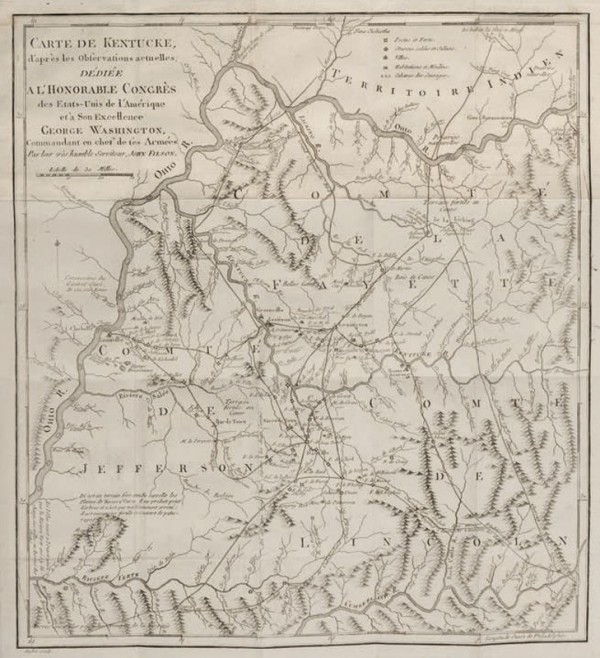
John Filson, Carte de Kentucke (Map of Kentucky), [1784], 1785. Engraving on laid paper. H. 15 1/4" x 13 1/2". (Courtesy, Colonial Williamsburg Foundation, Museum Purchase, Antique Collectors Guild, 2013-83.)

Log cabin, Lexington, Kentucky, 1779–1783. (Photo, Mack Cox.) This cabin was built by Col. Robert Patterson.
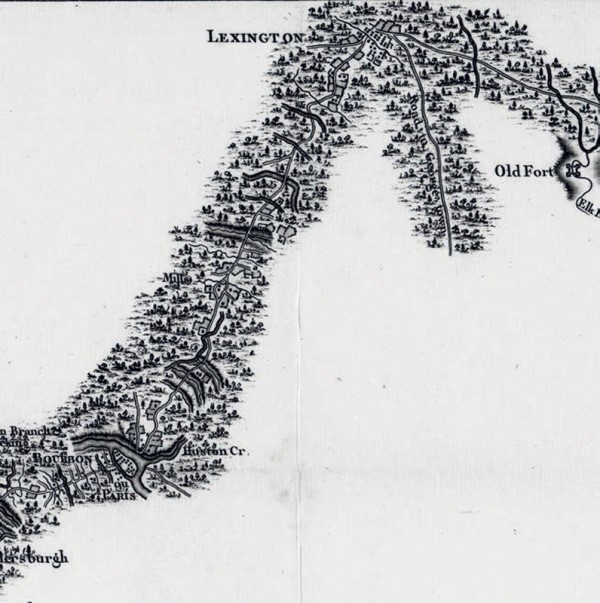
George Henri Victor Collot, Road from Limestone to Frankfort in the State of Kentucky, [1795], 1826. Engraving on paper. 21 1/2" x 21". (Courtesy, Kentucky Historical Society, 912.19769c714.)

Desk-and-bookcase, Mercer County, Kentucky, 1796. Walnut throughout. H. 102 3/4", W. 43 1/4", D. 23 1/4". (Private collection; courtesy, Cowan’s Auction.)

Desk-and-bookcase, Frederick County, Virginia, ca. 1795. Cherry with yellow pine. H. 103 3/4", W. 42 1/4", D. 24 1/2". (Courtesy, Colonial Williamsburg Foundation, Museum Purchase, 1930-68.)

Tall case clock, attributed to Daniel Spencer (1741–1796), Lexington, Kentucky, 1793–1796, with movement by Thomas Walker (d. 1786), Fredericksburg, Virginia, 1760–1775. Black walnut with chestnut and yellow pine. H. 95 1/8", W. 21 5/8", D. 11 1/8". (Courtesy, Colonial Williamsburg Foundation, Museum Purchase, 1951-578.) The Pennsylvania-style finials on this clock case are probably replacements.

Tall case clock, attributed to James Allen (1716–1789), with movement by Thomas Walker (d. 1786), Fredericksburg, Virginia, 1765–1785. Black walnut with yellow pine and oak. H. 96 1/2", W. 20 7/8", D. 10 3/8". (Courtesy, Colonial Williamsburg Foundation, Gift of Elizabeth M. Nicholson, 2005-105.)

Tall case clock attributed to Daniel Spencer (1741–1796), Lexington, Kentucky, 1793–1796. Cherry with tulip poplar and chestnut. H. 98 1/4", W. 22 1/4", D. 11". (Private collection; photo, Mack Cox.)
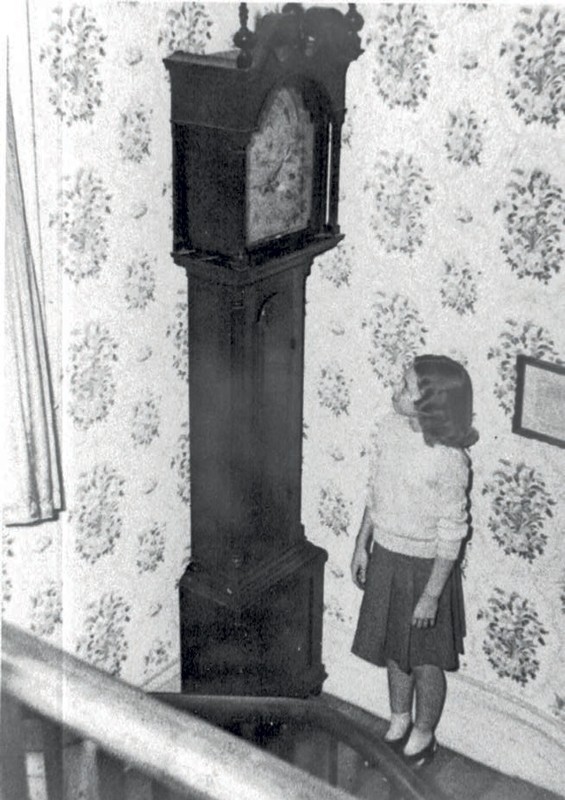
Tall case clock attributed to Daniel Spencer (1741–1796), Lexington, Kentucky, 1793–1796. Woods and dimensions unknown. This clock was owned by James T. Coy, Sr. (1868–1946). (Photo, Mack Cox.)

Detail of a rosette on the tall case clock illustrated in fig. 6.

Detail of a rosette on the desk-and-bookcase illustrated in fig. 29.

Detail of the rosettes and finials on the tall case clock illustrated in fig. 8.
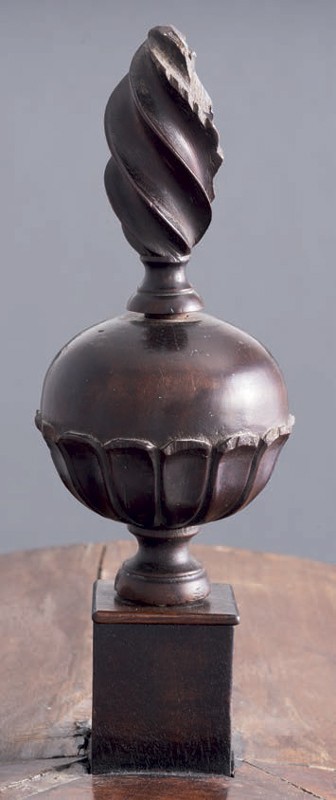
Detail of a finial on the tall case clock illustrated in fig. 14.

Tall case clock with movement by William Claggett, Newport, Rhode Island, ca. 1740 (movement) and ca. 1765 (case). Mahogany with chestnut and white pine. H. 100 1/4", W. 10 7/8", D. 11 5/8". (Courtesy, Colonial Williamsburg Foundation, Museum Purchase, 1972-36.)
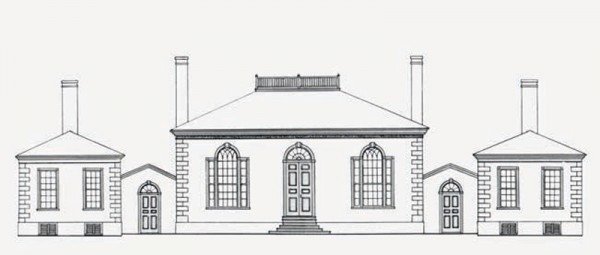
Drawing of the William Morton House, Lexington, Kentucky, ca. 1810. (Clay Lancaster, Vestiges of the Venerable City: A Chronicle of Lexington, Kentucky [Cincinnati, Ohio: Lexington-Fayette County Historical Commission, 1978], p. 29.)
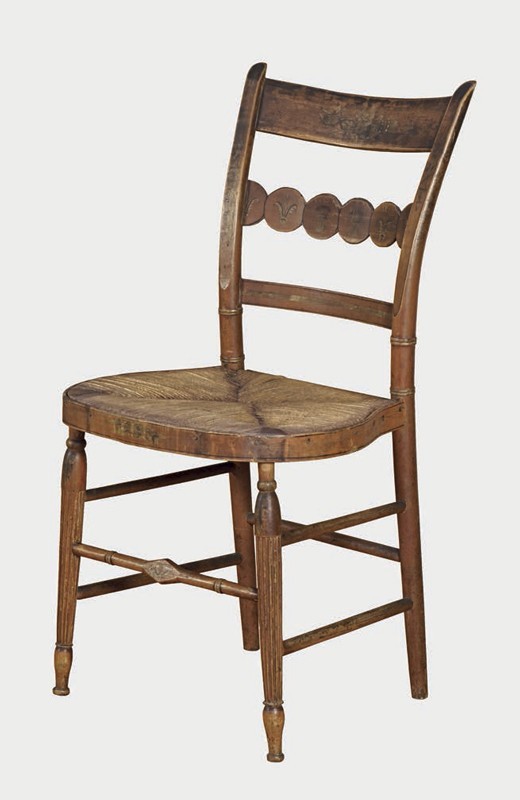
Side chair, possibly by William Challen, Lexington, Kentucky, ca. 1810. Paint decorated wood. H. 35", W. 18 1/4", D. 15". (Private collection; photo, Mack Cox.) This Lexington, Kentucky, Fancy chair is of the type that William Morton may have owned in his Lexington home. Challen, a British immigrant, worked in London, then New York City by 1796, and was in Lexington, Kentucky, by 1809.

Infrared photography of the graphite inscription inside the trunk door of the tall case clock illustrated in fig. 6.
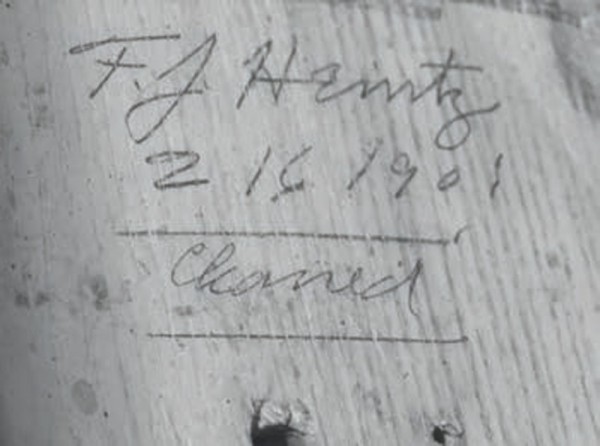
Infrared photography of the graphite inscription inside the backboard of the tall case clock illustrated in fig. 6.
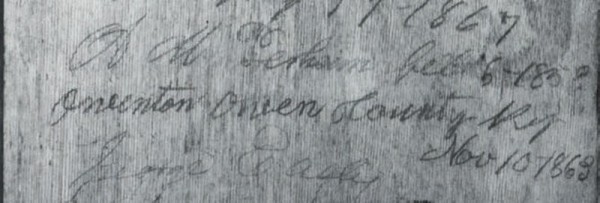
Detail of a cleaning inscription illustrated in figure 17. “A M Perham feb 5-1852/ Owenton Owen County KY/ Nov 10-1863.”

Detail of a cleaning inscription illustrated in figure 17. “George Easley/June 2 1865.”
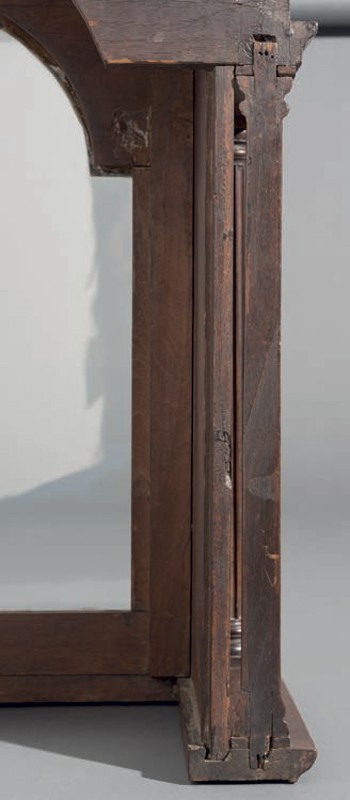
Detail showing the hood construction of the tall case clock illustrated in fig. 6.
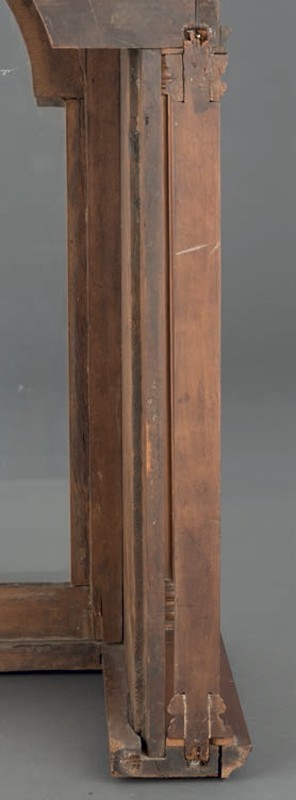
Detail showing the hood construction of the tall case clock illustrated in fig. 8.
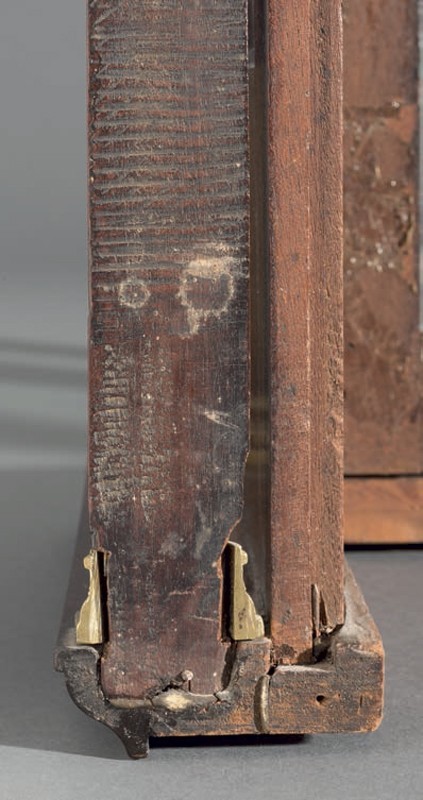
Detail showing the hood construction of the tall case clock illustrated in fig. 14.
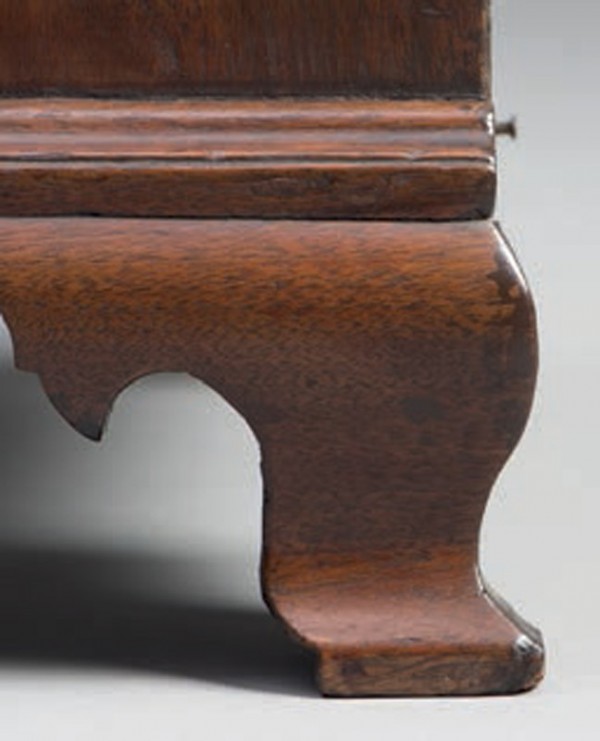
Detail of a rear bracket foot on the tall case clock illustrated in fig. 6.

Detail of a rear bracket foot on a chest of drawers by John Townsend, Newport, Rhode Island, 1793–1795. Mahogany with maple, chestnut and tulip poplar. H. 34 5/8", W. 36 3/8", D. 20". (Courtesy, Colonial Williamsburg Foundation, Gift of Dr. & Mrs. Warren Koontz, 1977-225.)
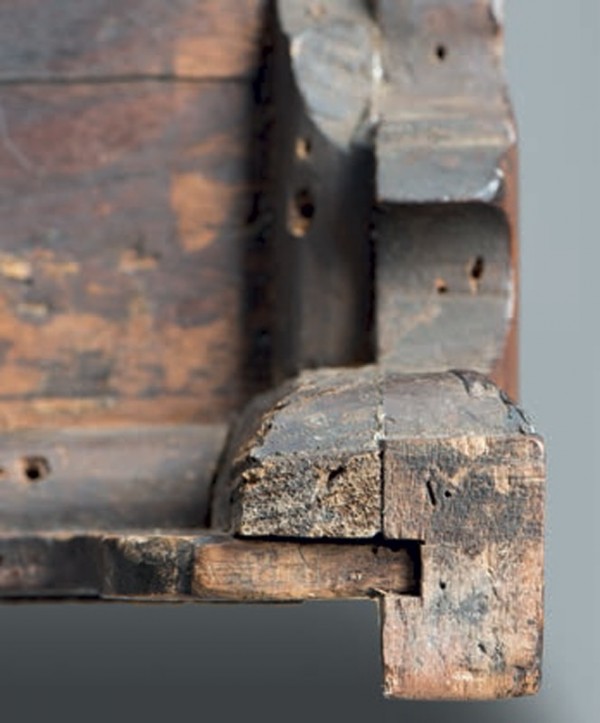
Detail showing a dadoed rear foot support on the tall case clock illustrated in fig. 6.

Detail of a rear bracket foot on a clothespress, Petersburg, Virginia or Philadelphia, Pennsylvania, ca. 1780. Mahogany with yellow pine, red cedar, tulip poplar, and black walnut. H. 81 3/4", W. 47 3/8", D. 25 3/8". (Courtesy, Colonial Williamsburg Foundation, Gift of Miss Martha B. D. Spotswood, 1977-228.)
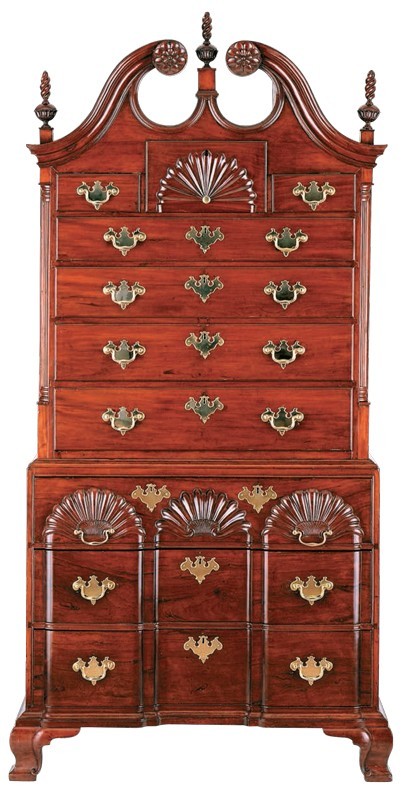
Chest-on-chest attributed to Daniel Spencer (1741–1796), Providence, Rhode Island, 1772–1790. Mahogany with chestnut, cherry, yellow poplar, and pine. H. 82 1/2", W. 42", D. 21 1/2". (Chipstone Foundation; photo, Gavin Ashworth.)
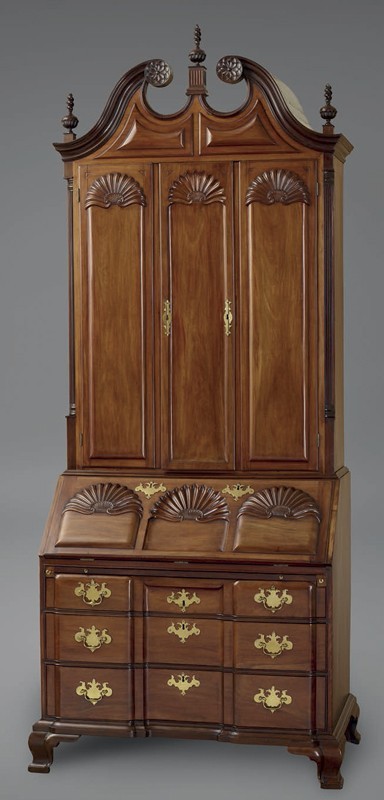
Desk-and-bookcase attributed to Daniel Spencer (1741–1796), Providence, Rhode Island, 1772–1790. Mahogany with cherry, chestnut, and eastern white pine. H. 107 1/4", W. 44 11/16", D. 25 3/16". (Courtesy, Yale University Art Gallery, Mabel Brady Garvan Collection, 1940.320.)
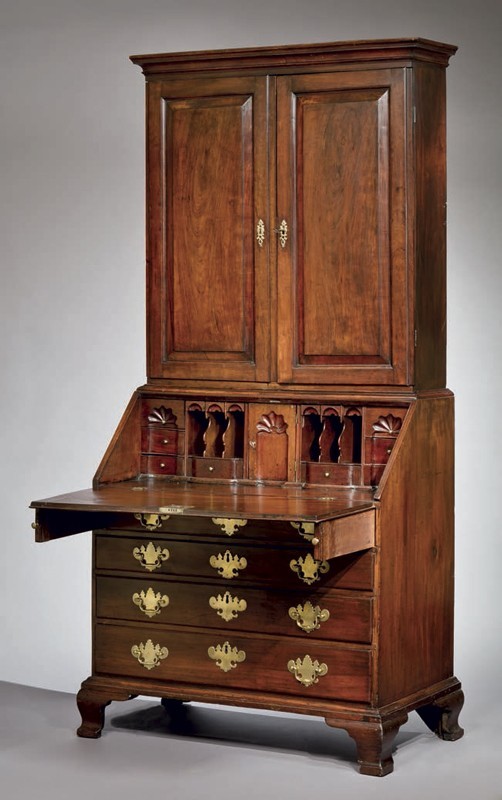
Desk-and-bookcase signed by Daniel Spencer (1741–1796), Newport or Providence, Rhode Island, or Dartmouth, Massachusetts, 1765–1785. Mahogany with chestnut, tulip poplar, pine, maple, and cherry. H. 71", W. 38 3/4", D. 21 1/4". (Courtesy, Bernard and S. Dean Levy, Inc.)

Tall case clock, attributed to Daniel Spencer (1741–1796), Lexington, Kentucky, 1793–1796, with movement by Thomas Walker (d. 1786), Fredericksburg, Virginia, 1760–1775. Black walnut with chestnut and yellow pine. H. 95 1/8", W. 21 5/8", D. 11 1/8". (Courtesy, Colonial Williamsburg Foundation, Museum Purchase, 1951-578.) Rhode Island-style finials were reproduced for this clock based on the Morton and Coy examples, and a Greek key blind fret was installed below the cornice molding based on nail evidence and a related fret on the Morton clock case.
